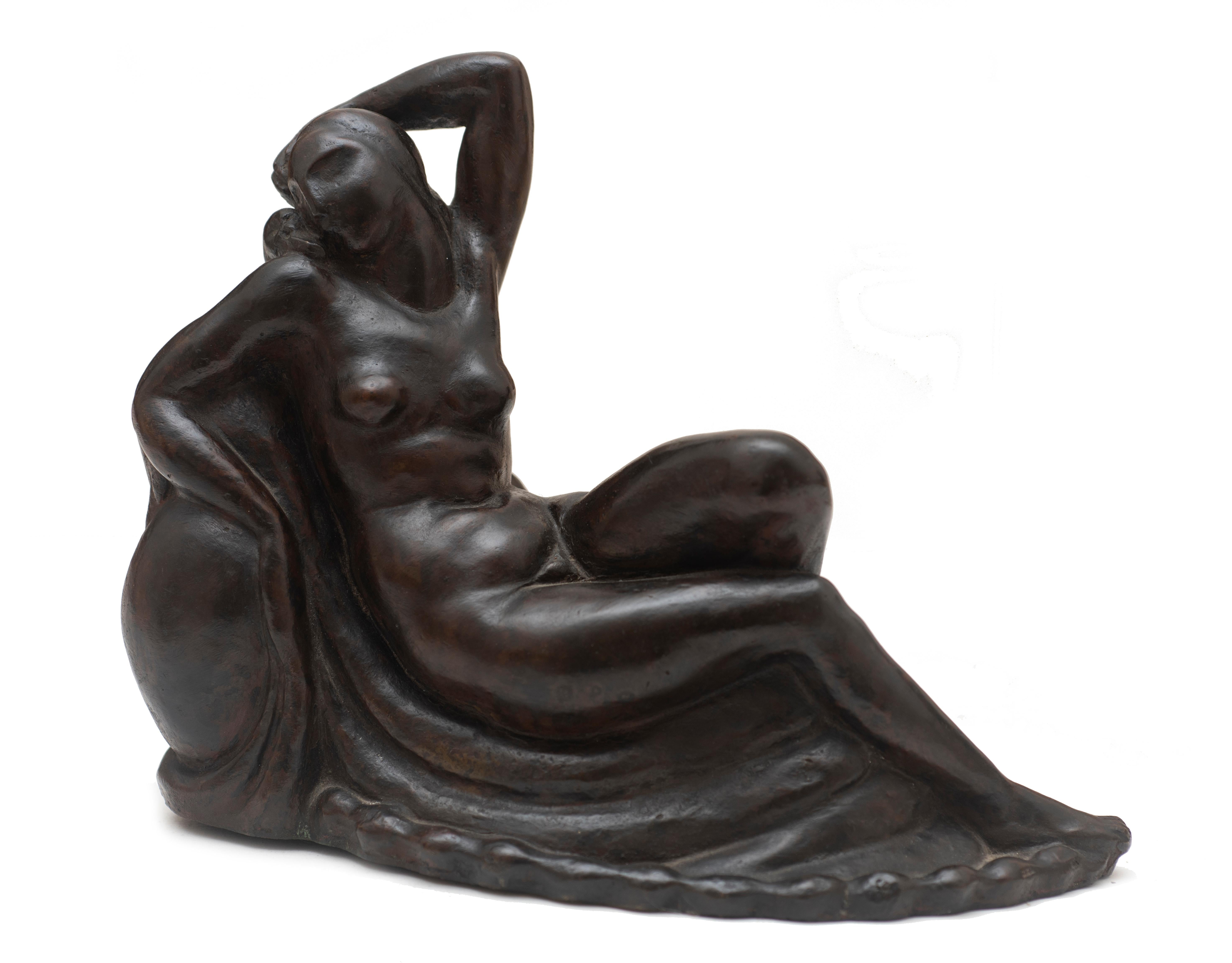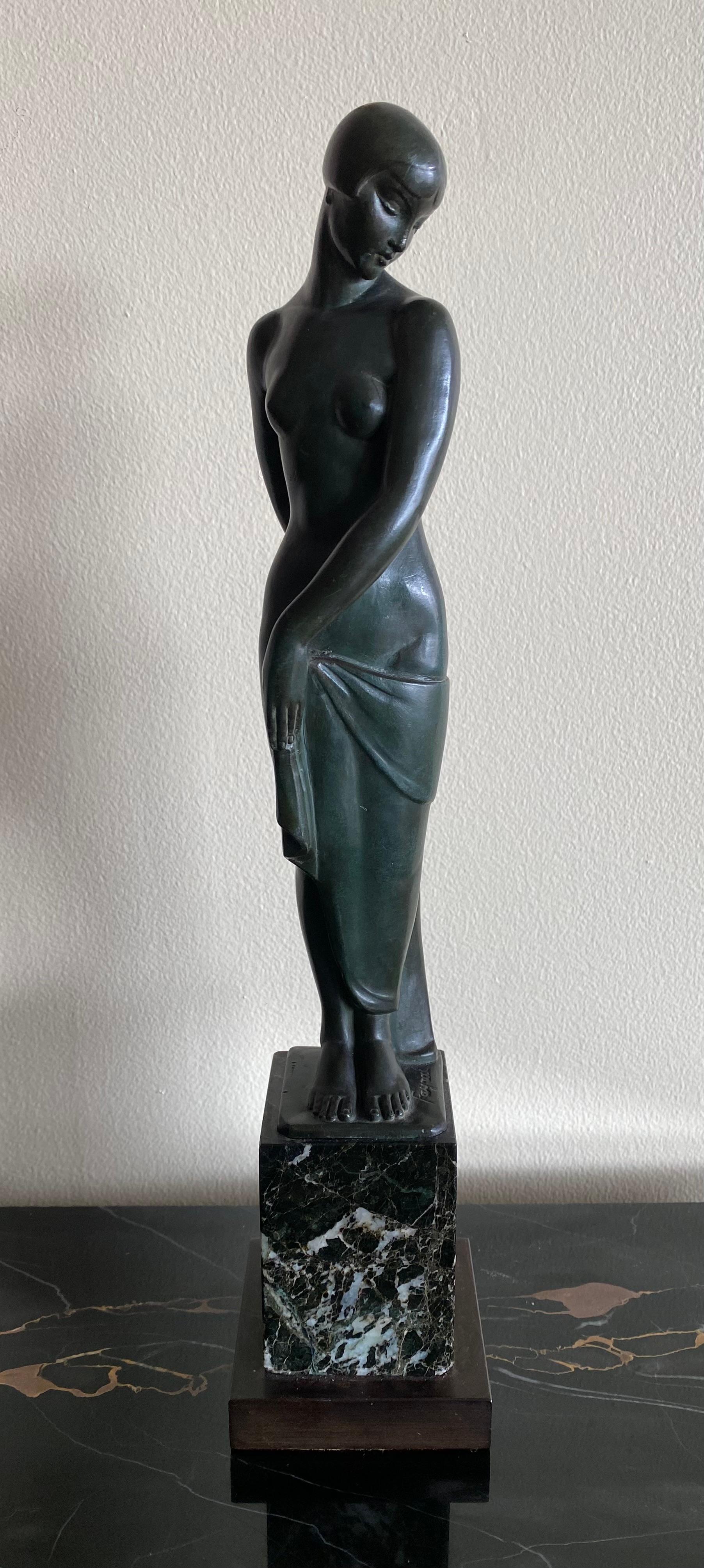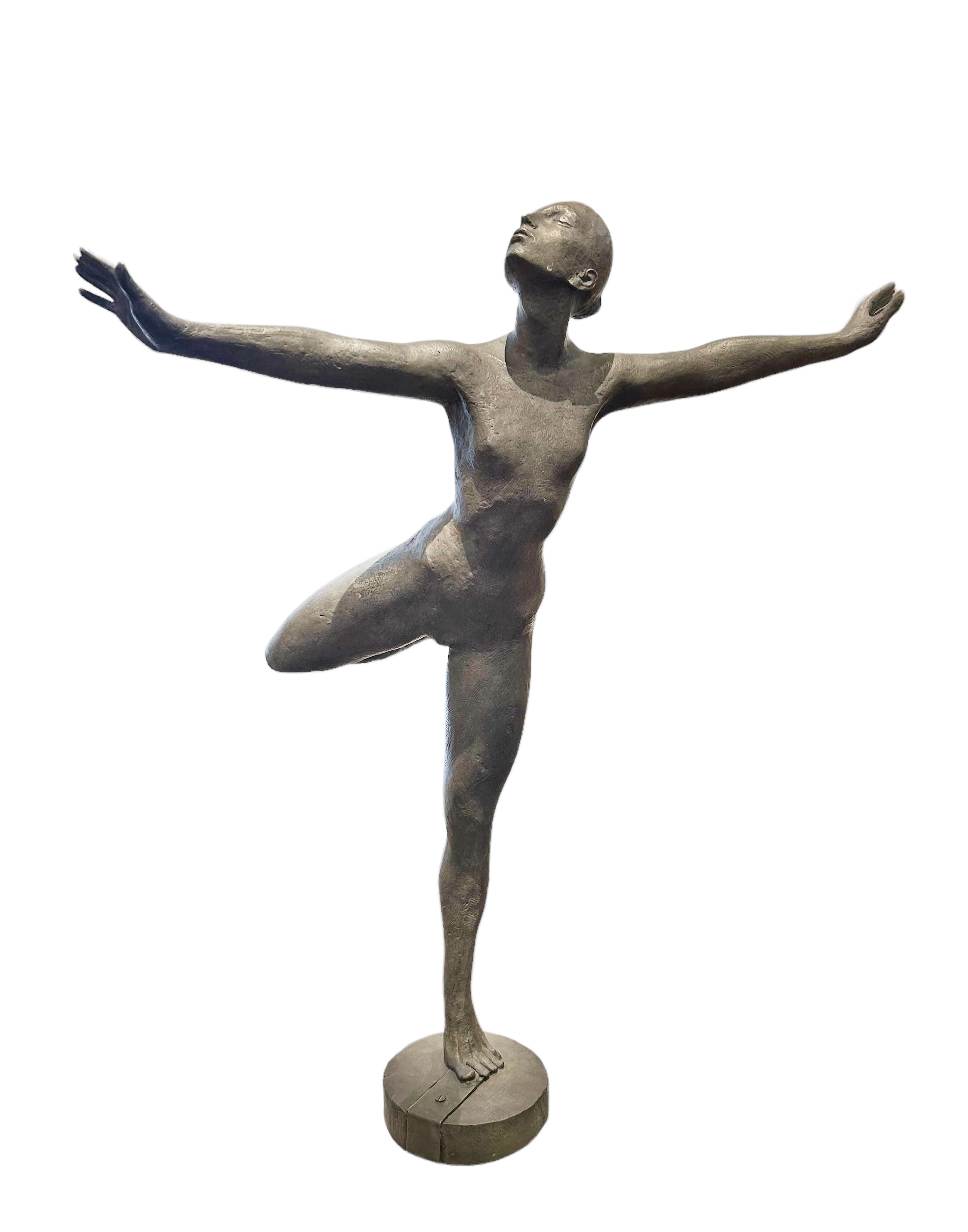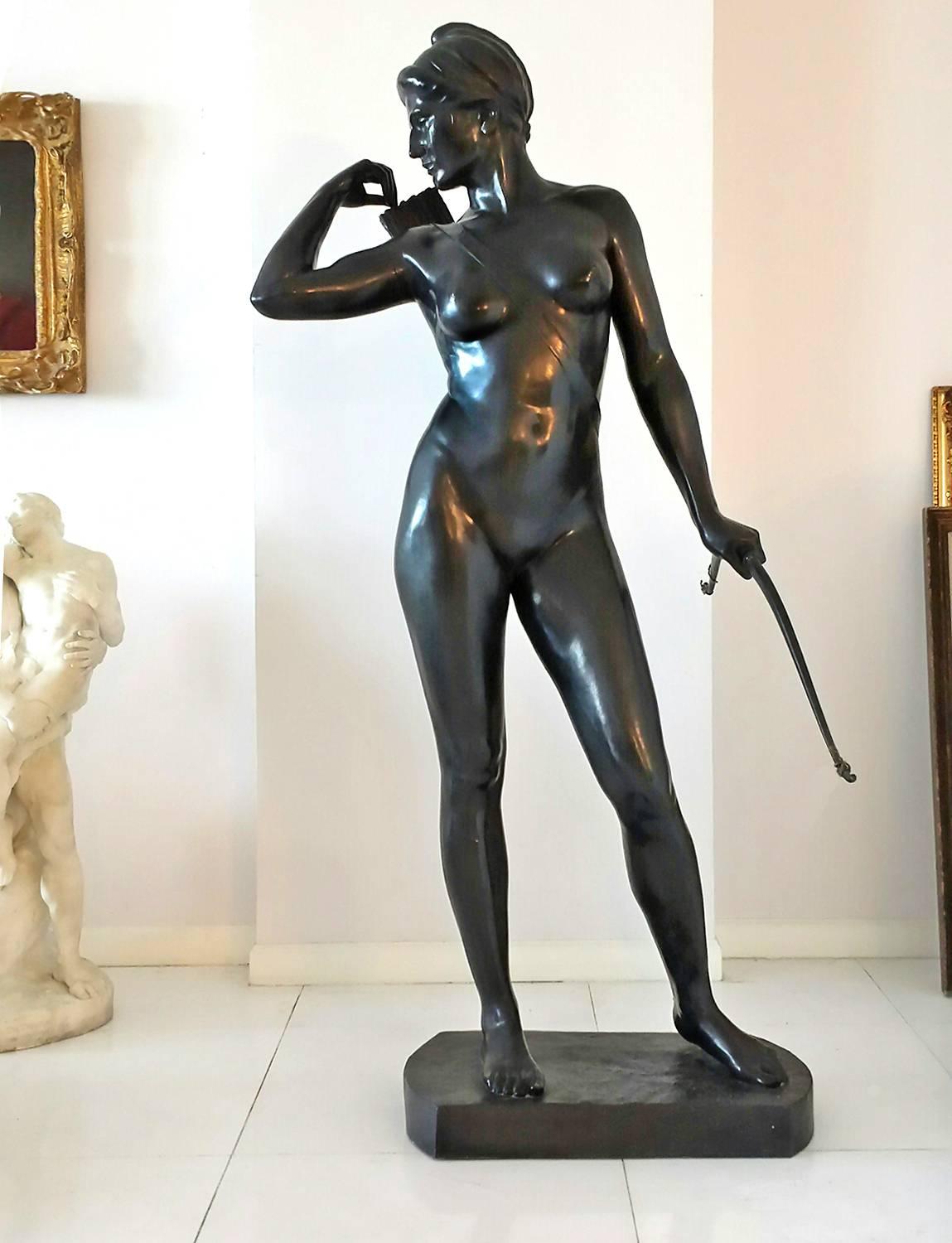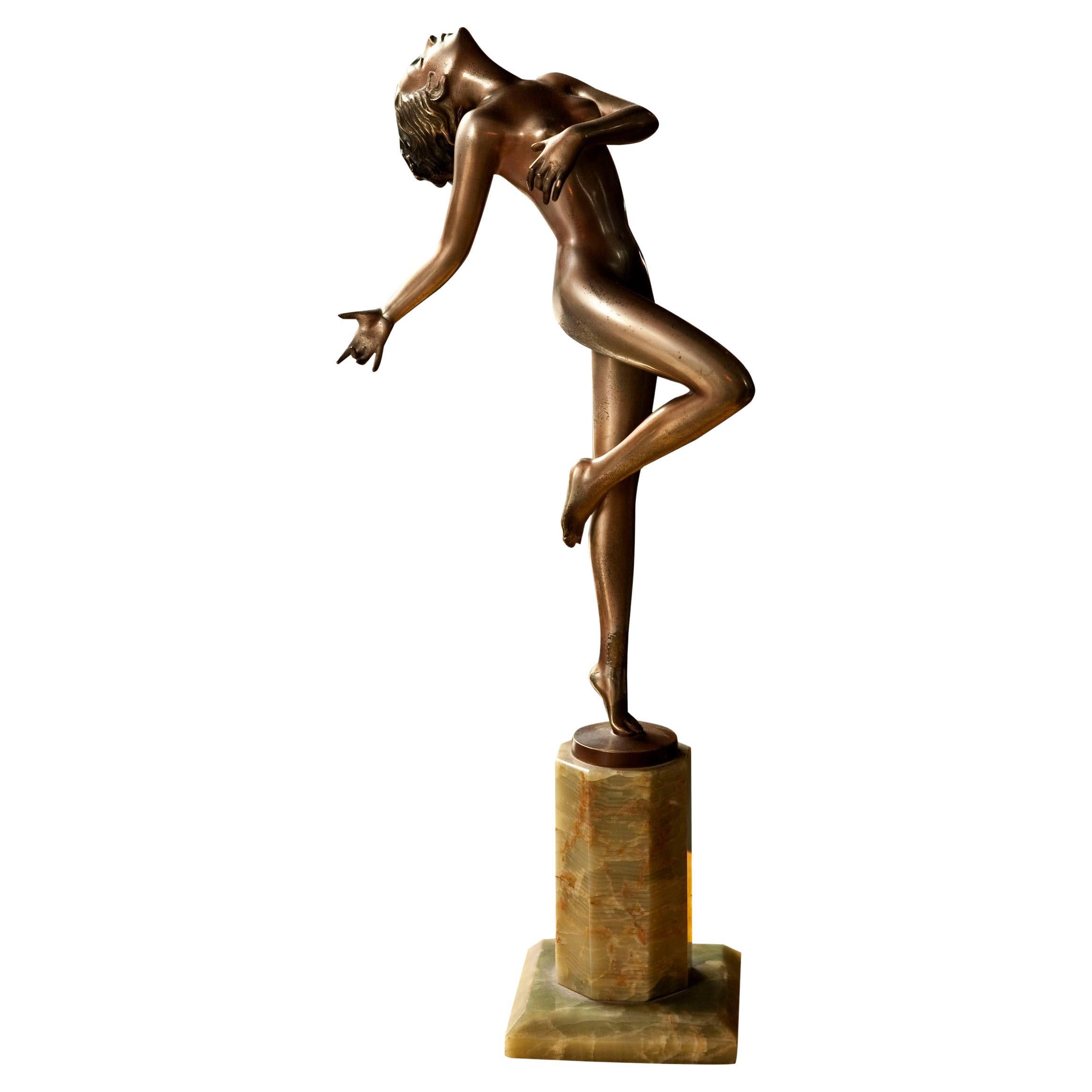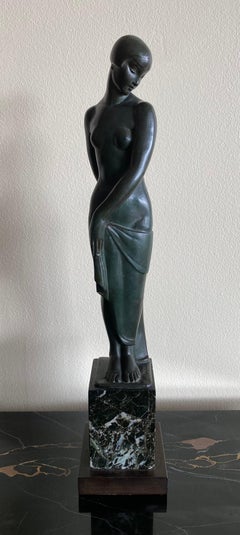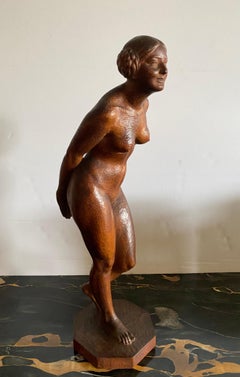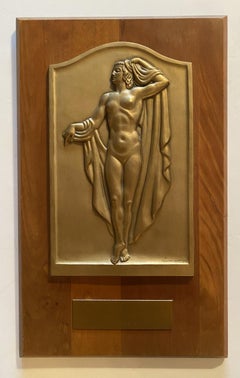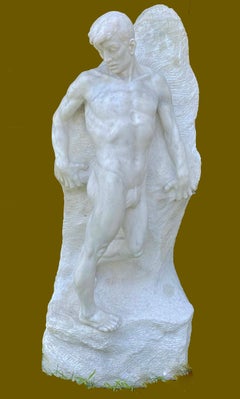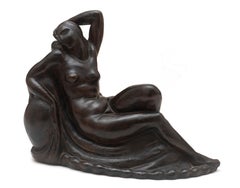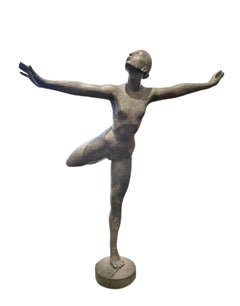Want more images or videos?
Request additional images or videos from the seller
1 of 6
Albert WeinLa ToiletteC1970
C1970
$7,250
£5,543.06
€6,350.91
CA$10,226.18
A$11,133.70
CHF 5,945.04
MX$134,401.17
NOK 74,739.79
SEK 69,516.70
DKK 47,438.19
About the Item
Albert Wein was born in New York in 1915 and was the only son of an accomplished woman artist, Elsa Wein. Her influence and intense commitment to nurturing the young Albert's seemingly insatiable appetite for artistic expression had a profound effect on the developing artist. He built upon this artistic foundation for the rest of his life.
To say that Albert Wein was a child prodigy is no mere boast. In 1927, when Albert was just twelve years old, Elsa Wein, "a true studio mother", moved the family to Maryland so she could enroll the budding young artist, Albert, and herself, into the Maryland Institute College of Art, a school that adhered to a curriculum of "academic based Classicism." At the time of his enrollment, Albert Wein was the youngest student ever to enroll in the college Art courses at the Maryland Institute.
After more than a year of "rigid" instruction, the 1929 Stock Market crash (and resulting economic impact it had on the Wein family) put an end to his studies at the institute. The family was forced to return to New York City to seek alternative employment.
In 1929, at the age of 14 while attending high school in the Bronx, in New York City, Wein registered for night classes at the National Academy of Design and sought out study in the Life Drawing Class of the well-known American Impressionist painter, Ivan Olinsky. At first, Olinsky's reaction to the request was not favorable because at the time no 14-year-old student had ever been admitted into a Life Drawing Class at the National Academy. This was due in part to the obvious age requirements in working with live models. Olinsky, after meeting personally with the serious young applicant, reviewed his work and at once recognized Wein's artistic talent and made an exception for him. Albert Wein once again became the youngest attendee among his peers in an advanced art class.
Early in 1932 Wein enrolled in classes at the Beaux-Arts Institute of Design in New York City where he expanded upon his academic education in sculpture while studying under some of the most prominent practitioners in their field. The Beaux Arts Institute was a school modeled after the Ecole des Beaux-Arts in France and the curriculum (among other things) prepared students for national competitions in the architectural application of their work. This early architectural based training proved to be invaluable throughout Wein's career as it applied to the large-scale public projects he would later produce.
In 1933, Wein's early inclination towards the Modernist Art Movement that was sweeping America and the rest of the art world led to his decision to enroll in the Hans Hofmann School of Fine Arts at 444 Madison Avenue in New York City. At the time he enrolled, Wein was very aware that Hans Hofmann was regarded as one of the most respected leaders in the forefront of Modernism and eagerly anticipated Hofmann's instruction. It was around this time that Wein, building upon his early unprecedented training in the classical tradition, sculpted "Adam," an early Cubist-influenced Modernist Masterwork. This work was a precursor to what would become his signature modernization/stylization of the classical form. In fact, Albert Wein was once quoted as saying that the main thrust of his work was "to modernize and stylize the classical tradition".
In 1934, at the age of 19, Wein took a pay-cut from his secular job as an artist working for an advertising company in New York City to join the WPA. This was an extremely productive period for him and he was able to produce many fine works for both private commissions and award winning national competitions. The works of this period gained him widespread recognition among collectors and fellow artists.
Among the many honors and awards bestowed upon Albert Wein during his illustrious career included those of the coveted Prix de Rome, the highest award in art, "likened to that of the Nobel Prize" the Tiffany Foundation Fellowship, the Rockefeller Foundation grant for study and more. He also participated in the "watershed" exhibition, "American Sculpture" in 1951 at the Metropolitan Museum of Art. "American Sculpture" is considered by many to be one of the most important early exhibitions of modernist sculpture in America.
In 1979 Wein was elected to full Academician of the National Academy of Design, one of the highest honors an American artist can receive. During his prodigious career he won every major prize available in exhibitions held at the National Sculpture Society and the National Academy of Design, the two leading art institutions of the day.
Some of his important commissions include those for the Brookgreen Gardens, (the world's largest outdoor Sculpture Garden) Steuben Glass Co., The Bronx Zoo, The Franklin Mint and The Libby Dam bas-relief on the Kootenai River in Montana, to name just a few. The latter work, Wein's Libby Dam project, was a massive artistic and engineering accomplishment. The three-story sculpture that Wein created is the world's largest granite bas-relief carving, weighing some 70 tons. It took a team of men working under his direction, three years to complete. The Libby Dam bas-relief "has been likened by critics to other sculptures in the U.S. grand tradition such as Daniel Chester French's seated figure of Abraham Lincoln in Washington, Gutzon Borglum's Mount Rushmore and Paul Manship's gilded bronze statue of Prometheus in Rockefeller Center Plaza."
Wein, in addition to being a noted sculptor, was also a prolific easel painter who painted in a purely Abstract Expressionist style. He approached painting much the same way he did his sculptural work, from a sound academic based foundation that gave him the legitimacy and freedom to express his modernist views.
He was also unique as a twentieth century artist because of achieving a balance between the extremes of Classicism and Modernism. His sound foundation of academic training provided the basis for the stylized, modernistic approach that set him apart from his contemporaries.
Wein Felt that "every good work of art is a good abstract composition" or could at least be represented by one. That the subject, devoid of details, and pared down to only what is necessary to convey the "essence" of the composition is what really mattered in a truly great work of art.
Albert Wein unexpectedly passed away in March of 1991, leaving behind a legacy of spectacular works that have universal appeal in part because of his unique ability to forge a union between centuries of artistic style.
Gordon Friedlander - close friend and son of Albert's artistic mentor, Leo Friedlander, the 21st president of the National Sculpture Society, stated eloquently: "Albert's work will live on and will endure."
______________________
About the Seller
5.0
Vetted Professional Seller
Every seller passes strict standards for authenticity and reliability
Established in 1972
1stDibs seller since 2011
409 sales on 1stDibs
Typical response time: <1 hour
- ShippingRetrieving quote...Shipping from: Los Angeles, CA
- Return Policy
More From This Seller
View AllOndine
By Pierre Le Faguays
Located in Los Angeles, CA
A French Art Deco dark green patinated metal figure titled "Ondine" by Pierre Le Faguays using his pseudonym Fayral. Beautifully executed and posed, she is holding a draped cloth in ...
Category
1930s Art Deco Figurative Sculptures
Materials
Metal
Standing Nude
By Eugene Wagner
Located in Los Angeles, CA
An original carved wood sculpture of an Art Deco standing nude .
German sculptor (1871 Berlin to 1942 ibid), studied at the Dresden Academy, took part in exhibitions in Munich, Düsse...
Category
1910s Art Deco Nude Sculptures
Materials
Wood
Coty Award
Located in Los Angeles, CA
Created C. 1943, award presented in 1965 to Gertrude Seperack for her design work in the fashion induustry.
The bronze portion measures 14 x 8.5 inches.
The Coty American Fashion Cri...
Category
1940s Art Deco Figurative Sculptures
Materials
Bronze
L'ABISSO
Located in Los Angeles, CA
Document from the Nashvile Art Association dated 1925. The marble was purchased in Florence, Italy at an exhibit of The Association of of Italian Artists.
Category
1920s Art Deco Figurative Sculptures
Materials
Marble
Bacchanal
Located in Los Angeles, CA
Charles Edouard Richefeu (1868-1945)
A stunning dated 1926.
A faun and nude woman dancing.
Signed RICHEFEU in the bronze. Foundry mark stamp "R. COTTIN & FILS Paris Bronze".
Definitely inspired by Diagilev Russian Ballet and Nijinsky dancer on Claude Debussy...
Category
1820s Art Deco Figurative Sculptures
Materials
Bronze
$2,368 Sale Price
20% Off
Nude
By Lorrie Goulet
Located in Los Angeles, CA
A beautiful rendition of a seated female nude in polished and chiseled marble.
Signed and dated 1981 on the back.
Stone, wood and ceramics sculptor Lorrie Goulet, who also makes draw...
Category
1980s Modern Nude Sculptures
Materials
Marble
$7,500
You May Also Like
Leda
Located in Roma, RM
Alfredo Biagini (Rome 1886 - Rome 1952), Leda (1926)
Bronze sculpture 22 x 25 x 10 cm, unsigned.
Bibliography: Alfredo Biagini sculptures and deco ceramics edited by Irene de Gutt...
Category
Early 20th Century Art Deco Nude Sculptures
Materials
Bronze
Arabesque
Located in New Orleans, LA
Artist Enrique Alférez was born in Zacatecas, Mexico and lived nearly the entire 20th century. After service in the Mexican Revolution as a youth, he emigrated to Texas, studied in C...
Category
1980s Art Deco Nude Sculptures
Materials
Bronze
Price Upon Request
Bather
Located in New Orleans, LA
Artist Enrique Alférez was born in Zacatecas, Mexico and lived nearly the entire 20th century. After service in the Mexican Revolution as a youth, he emigrated to Texas, studied in C...
Category
1980s Art Deco Nude Sculptures
Materials
Bronze
Price Upon Request
Art Deco Diana
By Hans Harry Liebmann
Located in Miami, FL
This is a rare statement piece that commands that eye. It is of museum quality will be the centerpiece of any space. Masterfully crafted details of the human form are finely rendered in a pre-art deco style. Hans Harry Liebmann...
Category
1910s Art Deco Nude Sculptures
Materials
Bronze
Sculpture, 1920, Art Deco, Sign Lorenzl
Located in Ciudad Autónoma Buenos Aires, C
Sign:
Lorenz Josef
(Austria, 1892-1950). Sculptor, known for its dancers. Worked along with Goldscheider in Vienna.
Materials: Bronxe and onyx with the original patina
We have specialized in the sale of Art Deco and Art Nouveau and Vintage styles since 1982. If you have any questions we are at your disposal.
Pushing the button that reads 'View All From Seller'. And you can see more objects to the style for sale.
Josef Lorenzl (1 September 1892 – 15 August 1950) was an Austrian sculptor and ceramicist of the Art Deco period, the same era as Ferdinand Preiss (1882–1943) and Demetre Chiparus (1886–1947).
Lorenzl was born on 1 September 1882 in Vienna, Austria and died there on 15 August 1950. Little is known about his early years, but more is known about his later life. Lorenzl started his career working at a foundry at the Vienna Arsenal where he learned the techniques of bronze casting. The Vienna Arsenal was a military storage...
Category
Vintage 1920s Austrian Art Deco Figurative Sculptures
Materials
Onyx, Bronze
Danse
Located in Villafranca Di Verona, IT
Numbered and limited to 12 copies ( 8 + 4 P.A)
Artwork signed
Authenticity: Sold with certificate of Authenticity from the gallery
Invoice from the gallery
Sculpture: bronze, metal,...
Category
21st Century and Contemporary Modern Nude Sculptures
Materials
Bronze
More Ways To Browse
Cafe Florian
Canoe Paddle Africa
Cesar Thumb
Charna Rickey On Sale
Chen Si
Chola Bronze
Chris Fraticelli
Christopher David White
Clark Bronson
Contemporary Art W Swimmers
Dali Bronze Christ John Cross
Dali Bronze John Saint
Dali Bronze Watch
Dali Gold Relief
Dali Silver Christ
Daniel Kafri
David Bennett Glass
Dogon Bronze
